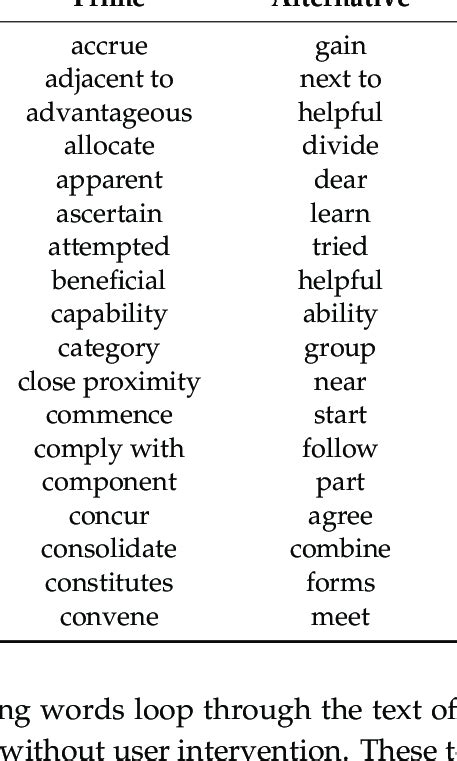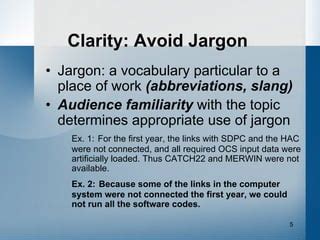The Cost of Corporate Speak and Technical Terms
In our professional lives, we often find ourselves immersed in a language specific to our industry, department, or even team. While this specialized vocabulary can facilitate quick communication among peers, it frequently becomes a barrier to clarity when addressing a wider audience. Jargon, whether it’s corporate buzzwords, technical acronyms, or overly academic phrasing, creates an exclusive club, leaving outsiders confused, alienated, or simply disengaged. The ultimate goal of communication is to be understood, and jargon directly obstructs this.
Consider the time wasted in explaining terms, the misunderstandings that arise, or the lost opportunities when a key message fails to land because it’s cloaked in impenetrable language. Cutting jargon isn’t just about simplifying; it’s about maximizing impact, fostering inclusion, and ensuring your message is accessible to everyone who needs to hear it.

Identify the Culprits: Recognizing Jargon in Your Own Writing
The first step to cutting jargon is to recognize it. Often, we are so accustomed to certain terms that we don’t even perceive them as jargon. Here are some strategies to help you identify the culprits in your own writing:
- The Grandmother Test: Read your text aloud and imagine explaining it to your grandmother or a bright 10-year-old. If you have to pause, rephrase, or add extra explanation, you’ve likely hit a jargon point.
- The Acronym Alert: Any acronym or initialism not universally understood (e.g., USA, NATO) should be viewed with suspicion. Either spell it out or define it clearly.
- The Buzzword Bingo: Words that sound impressive but convey little specific meaning (e.g., ‘synergy,’ ‘paradigm shift,’ ‘leverage,’ ‘optimize’) are often jargon. Ask yourself: what does this *actually* mean?
- Audience Assessment: Who is your primary audience? What do they already know? What information do they genuinely need? Tailor your language to their level of understanding, not your own.

Strategies for Simplification: How to Replace Jargon
Once you’ve identified jargon, the next step is to replace it with clearer, more accessible language. This doesn’t mean dumbing down your content; it means making it intelligent and understandable for everyone.
1. Choose Simple, Direct Words
Many jargon terms have perfectly good plain-language equivalents. Instead of ‘utilize,’ use ‘use.’ Replace ‘facilitate’ with ‘help.’ Change ‘implement’ to ‘start’ or ‘put into action.’ A good thesaurus can be your ally here, but always prioritize the most common and easily understood term.
2. Break Down Complex Concepts
If a concept is inherently complex, don’t just state it with a fancy term. Break it down into smaller, digestible pieces. Use analogies, metaphors, or real-world examples to illustrate your point. Show, don’t just tell. For instance, instead of saying, ‘We are focusing on horizontal integration across our business units to foster cross-functional synergies,’ try, ‘We’re getting our different departments to work together more closely, so they can share ideas and resources, making everyone more effective.’

3. Use Active Voice and Strong Verbs
Jargon often hides in passive constructions and weak verbs. Active voice is generally clearer, more direct, and more concise. ‘The report was finalized by the team’ (passive) becomes ‘The team finalized the report’ (active). This small change can make a big difference in readability.
4. Explain, Don’t Just State
If you absolutely must use a technical term that your audience might not know, explain it the first time you use it. Put the explanation in parentheses, in a footnote, or immediately after the term. For example, ‘We are developing a new CRM (Customer Relationship Management) system to streamline our sales process.’

The Benefits of Plain Language
Embracing plain language has far-reaching benefits beyond mere clarity. It builds trust and credibility because it demonstrates respect for your audience’s time and intelligence. It improves engagement, as readers are more likely to stick with content they can easily understand. It can even lead to better decision-making, as everyone involved has a clear grasp of the facts and implications.
Ultimately, writing clearly by cutting jargon is a powerful skill. It requires conscious effort and practice, but the return on investment – in terms of effective communication, stronger relationships, and greater impact – is invaluable. Make it a habit to review your writing with a critical eye, always asking: ‘Can this be said more simply?’





